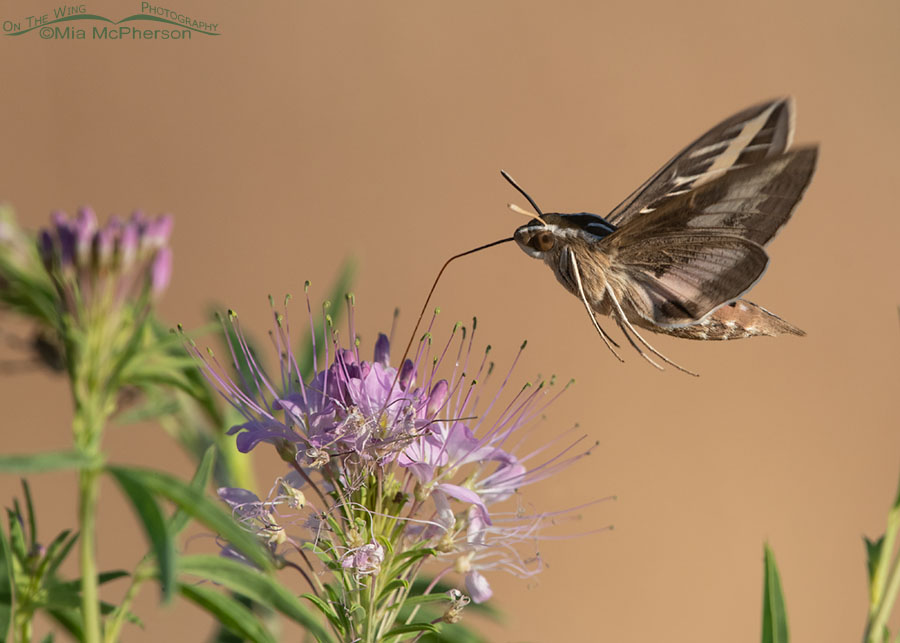 White-lined Sphinx Moth nectaring – Nikon D500, f7.1, 1/1250, ISO 500, Nikkor 500mm VR with 1.4x TC, natural light
White-lined Sphinx Moth nectaring – Nikon D500, f7.1, 1/1250, ISO 500, Nikkor 500mm VR with 1.4x TC, natural light
Even though I am primarily a bird photographer I can’t resist photographing other subjects especially if those subjects have wings so when I saw a White-lined Sphinx Moth yesterday I simply had to focus on it for a bit. My passion is taking images of birds but everything in nature is connected and I feel that connection every time I go out into the field.
I don’t recall taking any White-lined Sphinx moth photos last year so the photos I took yesterday were long overdue. I remember seeing sphinx moths when I was a child and comparing the way they flew to hummingbirds. I know that some people consider the caterpillar stage of these moths as pests because they feed on the leaves of apples, grapes and tomatoes but they sure are wonderful to see as adults.
It is going to be over 100°F here today but hopefully this will be the last day this year that it gets this hot. Yesterday my outside thermometer read 104°F at one point and the sensor wasn’t even in direct sun. That is too hot for my tastes.
Life is good.
Mia
See more of my White-lined Sphinx Moth photos here.
White-lined Sphinx Moth facts and information:
Hyles lineata
- White-lined Sphinx Moths can be found from Central America, Mexico, the West Indies and most of North American including southern Canada. They also occur in Africa and Eurasia.
- White-lined Sphinx moths prefer open country including gardens, suburbs and deserts.
- Adults hover over flowers to nectar. Plants they nectar on include cleomes, lilacs, clovers, columbines, thistles, morning glory, moonvines, petunias, honeysuckles and larkspurs. Caterpillars, often called tomato hornworms, can be found on tomatoes, purslanes, apples, evening primroses, elms, grapes and more.
- There are usually two broods per season.


What an extraordinary shot! Your hummingbird pics are amazing enough, but capturing a moth drawing nectar while in flight? Incredible! Thanks Mia.
Fantastic shot of a couple of lovely specimens (both the sphinx moth and the bee plant). 🙂 And I agree about the temps — anything over 85 its too hot in my book and over 100 is too %#&*@^ hot! 😉
Brilliant shot. I do love the moffs and the flutterbyes. And yes, those temperatures are tooo hot.
I hope you get some cooling relief soon.
WOW! Mia!!! What a wonderful shot!!! I had a Butterfly Bush that used to attract 3 of these little beauties,and a hummingbird or two, regularly…Loved seeing them both…
Nice photo. I have them in my yard but they only come out at dusk, too dark for photos. I usually sit in a lawn chair and watch them.
A long time since we talked to each other. The Moth is beautiful, and looking back, the birds are gorgeous Mia.
Beautiful shot Mia, beautiful Moth.
Amazing photo! The detail is awesome.
Great image! I’ve never seen one of these moths getting nectar before. Nice detail of the process. Thanks for sharing.
OK this is my favorite! They may have all the tomatoes in the garden.